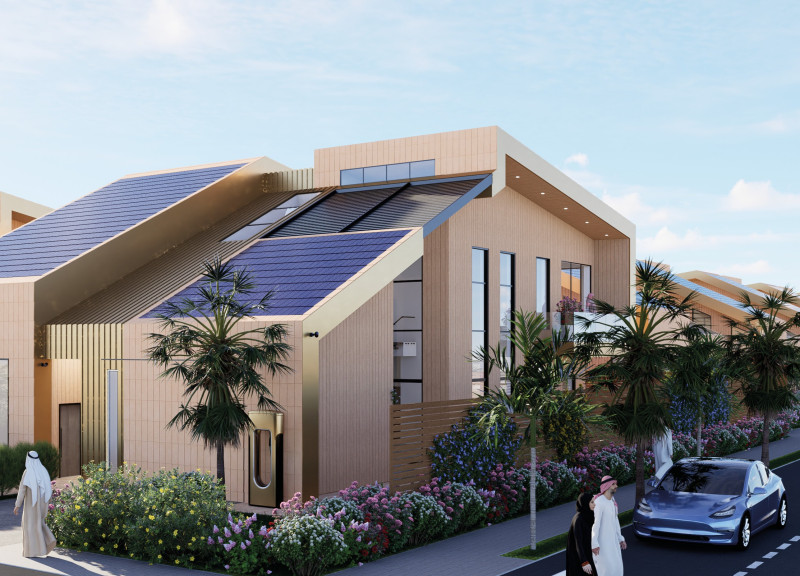5 key facts about this project
At first glance, the project showcases a rhythmic interplay of volumes and surfaces that attract the eye. The façade employs a blend of natural materials such as wood, concrete, and glass, presenting a warm yet robust exterior that reflects the values of sustainability and durability. The use of timber cladding creates an inviting appearance while also ensuring that the building seamlessly blends with the landscape. Large glass panels punctuate the structure, providing transparency and allowing natural light to penetrate deep into the interior, thus blurring the line between inside and outside spaces.
Functionality is at the heart of this design. The layout has been meticulously planned to accommodate a variety of uses, including communal areas, private spaces, and multifunctional rooms. Open-plan areas encourage collaboration and social interaction, while strategically located private zones offer a retreat for focused activities. Furthermore, incorporating flexible design elements, such as movable partitions, allows spaces to adapt to the changing needs of users, emphasizing the project's responsiveness and versatility.
One particularly noteworthy aspect of the architectural design is its sustainability measures. The project incorporates green design principles through energy-efficient systems, rainwater collection, and the use of local materials that minimize transportation emissions. This sustainable approach not only reduces the ecological footprint but also contributes to the overall wellness of occupants by promoting a connection to nature. The project champions biophilic design by incorporating elements such as green roofs and indoor plantings, which enhance air quality and create a more pleasant atmosphere.
The distinctiveness of this architectural endeavor lies in its unique design approaches that cater to both aesthetic appeal and functional efficiency. The thoughtful incorporation of traditional building techniques alongside modern materials highlights a commitment to preserving cultural heritage while embracing contemporary innovations. This blend results in a narrative that speaks to the area’s identity, providing a sense of place that resonates with local inhabitants and visitors alike.
As one explores the details of this architectural project, it becomes evident that each element has been carefully considered to serve a larger purpose. Architectural plans reveal a comprehensive understanding of spatial relationships, while sections illustrate the interplay of light and shadow. The design ideas presented within this project not only aim to satisfy the immediate functional requirements but also evoke a sense of belonging and community through thoughtful engagement with the surrounding environment.
For a deeper understanding of how these elements coalesce within the architectural framework, interested readers are encouraged to explore further details, including architectural plans and sections. An examination of these documents will grant additional insight into the intricate design decisions that shape the essence of this project, emphasizing the carefully crafted architectural ideas that contribute to its overall narrative.


 Daniel Inocente
Daniel Inocente 























